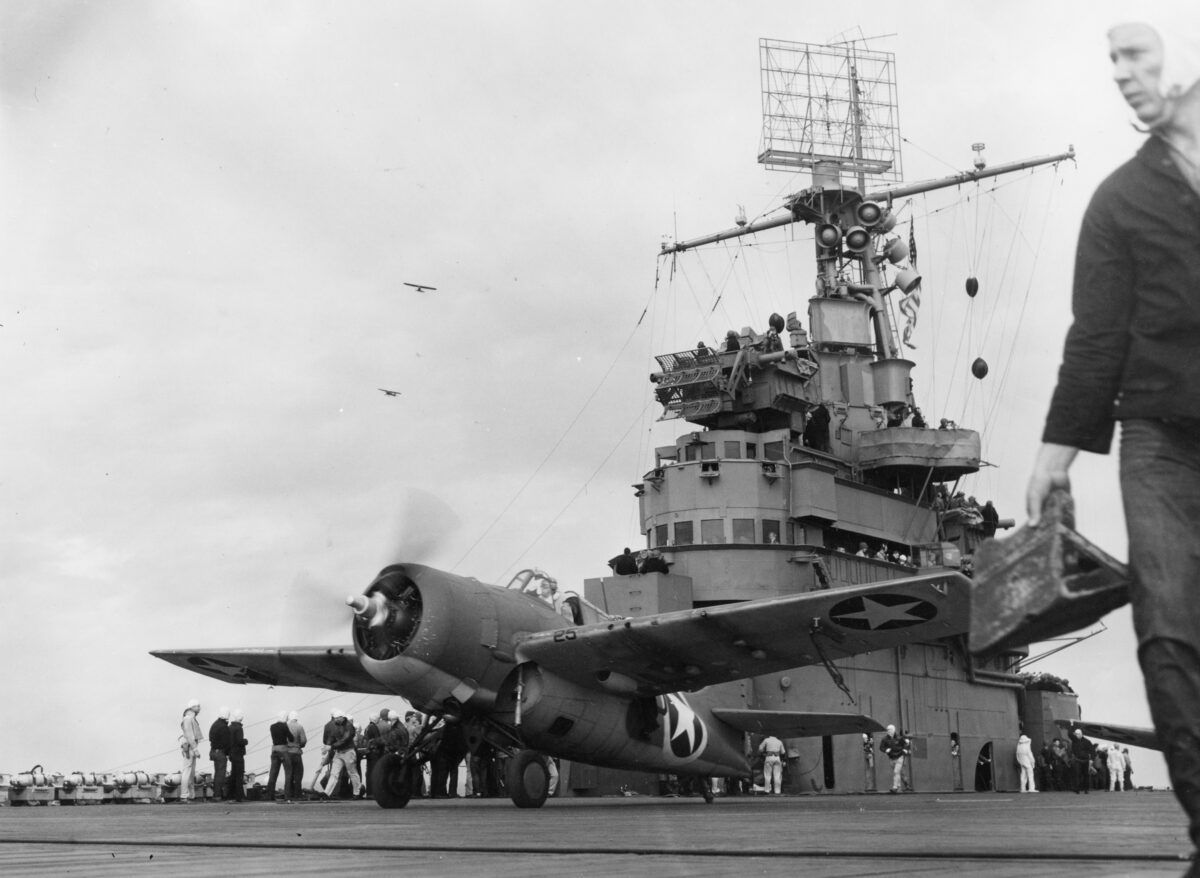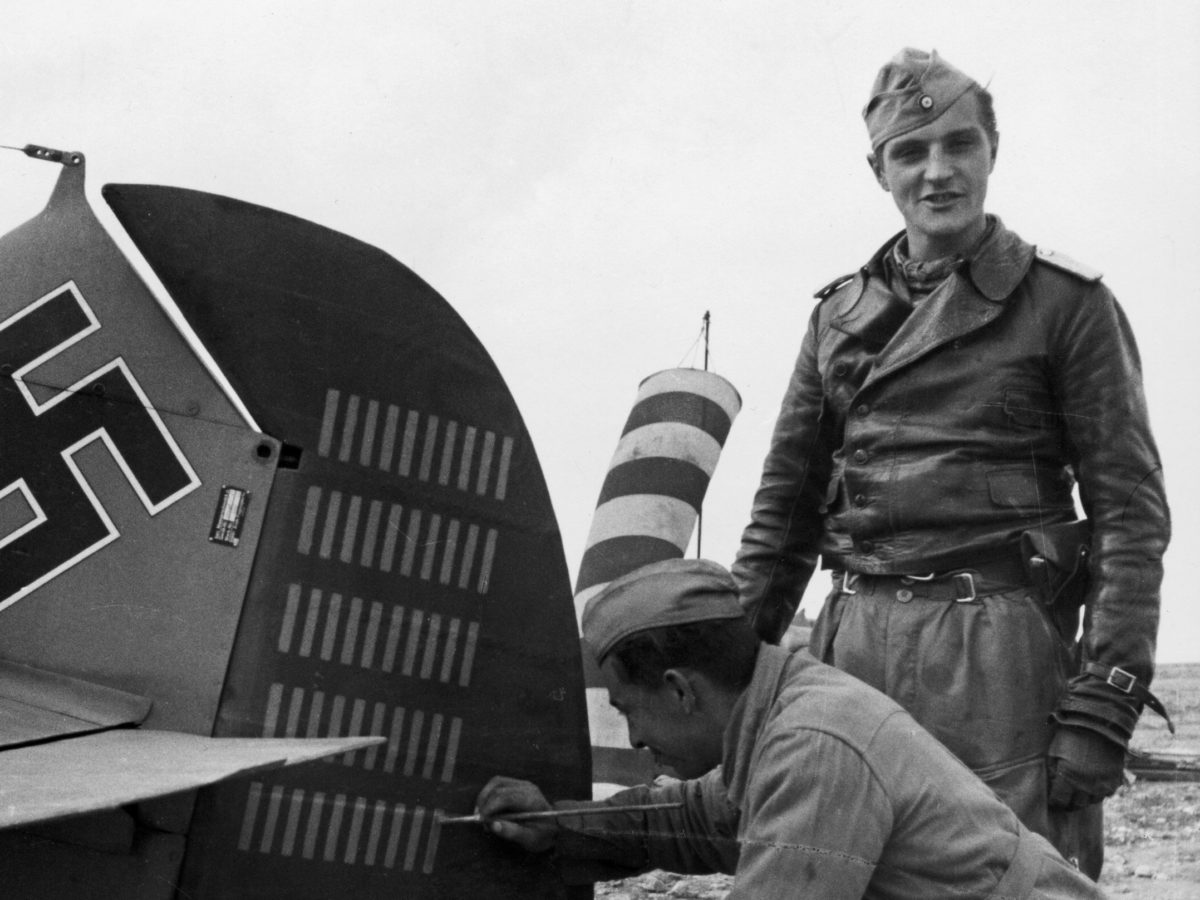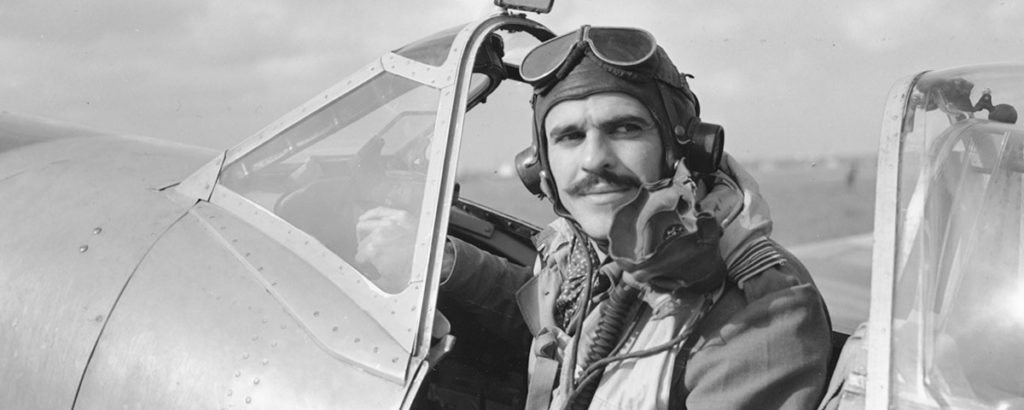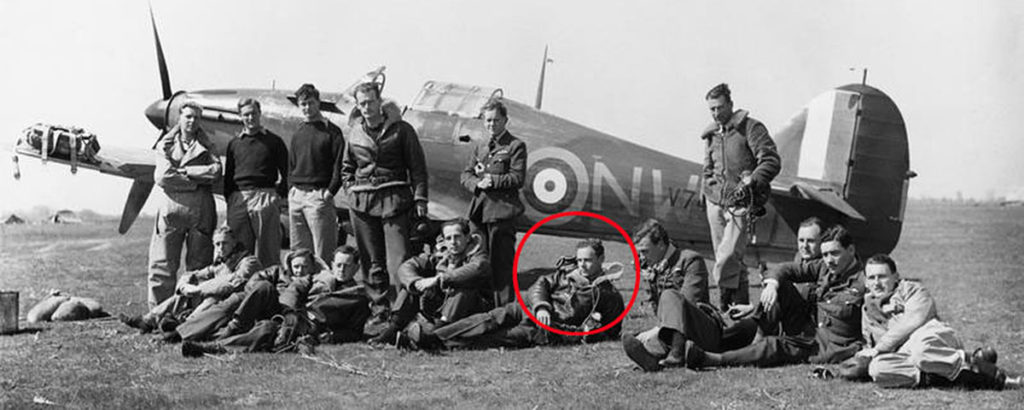The Allied invasion of Algeria and French Morocco in November 1942 was a complex and daring operation that would not have succeeded without American naval air power. U.S. Navy Task Force 34 voyaged through some 4,500 miles of U-boat–infested waters to land Major General George S. Patton’s army on Morocco’s Atlantic coast. In addition to escorting warships, that flotilla—part of Operation Torch, as it was code-named— included the venerable aircraft carrier Ranger and four newly minted escort carriers: Santee, Suwanee, Sangamon and Chenango. The carriers ferried 109 Grumman F4F-4 Wildcat fighters, 36 Douglas SBD-3 Dauntless dive bombers and 27 Grumman TBF-1 Avenger torpedo bombers that would support the amphibious assault on the Vichy French.
Morocco’s defenses included a small squadron of French destroyers, a pair of submarines and the uncompleted battleship Jean Bart, moored in Casablanca Harbor. French air units in Morocco accounted for a total of 208 aircraft, nearly half of them built in the United States. In addition to Douglas DB-7s and Martin 167 Baltimore bombers, they included 46 Curtiss H-75A fighters (export versions of the P-36A Hawk).
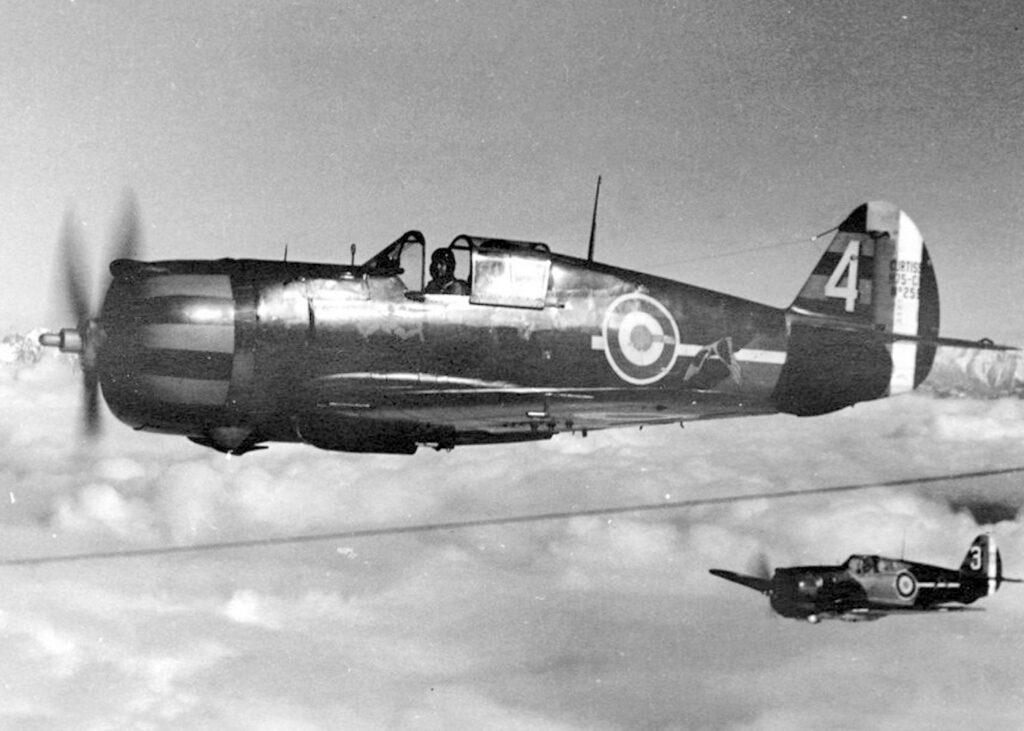
Many of the Vichy fliers were veterans of combat with the Germans. Among the Hawk units was Groupe de Chasse II/5, named after the legendary “Lafayette Escadrille” N.124 of World War I fame. Ironically, while the original unit—identified by its Indian head insignia—had consisted of American pilots coming to France’s aid flying French aircraft, in this case French pilots were about to do battle with American pilots—with both sides flying American-built fighters.
Vichy French forces in Morocco were unaware of the massive invasion force steaming toward them until dawn on November 8, when landing craft began hitting the beaches, along with covering fire from the Allied flotilla. By 6:30 the French had sounded alert sirens at scattered barracks and airfields. After shore batteries near Casablanca belatedly responded, the Vichy government’s forces were called to defend its installations—and French honor.
“Fighting Nine”(VF-9) was launched from Ranger at 6:10, with commanding officer Lt. Cmdr. Jack Raby leading nine Wildcats off the deck. Sweeping unopposed over Cazes airfield, southwest of Casablanca, they made three line-abreast passes, destroying many French aircraft on the ground. Eight more VF-9 Wildcats concentrated on the Sale airfield, strafing multi-engine bombers being readied for takeoff.
The first French Hawks to make it into the air over Casablanca, six fighters of GC II/5 led by Lieutenant Pierre Villacèque, encountered Vought OS2U-3 Kingfisher and Curtiss SOC-1 floatplanes that were spotting fleet gunfire. After one Kingfisher was shot down, the rest of the spotters retreated.
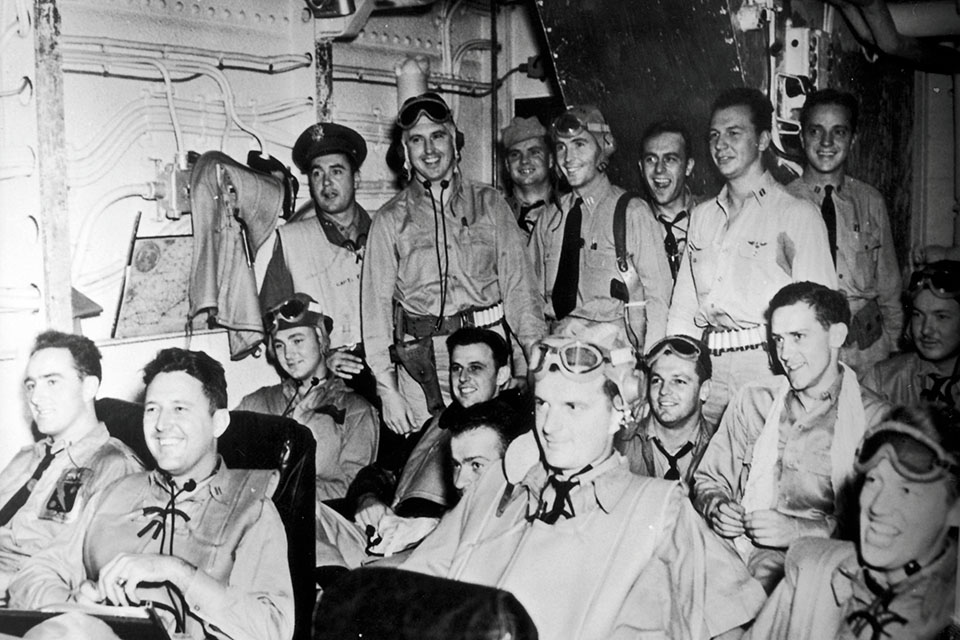
As a second squadron from Ranger, VF-41, entered the action over Cazes and the beachhead, its F4Fs clashed with French Hawks and Dewoitine D.520s. Lieutenant j.g. Charles “Windy” Shields encountered two red-and-yellow-striped French fighters. The enemy planes came so close, he recalled,“You could see their insignia.” Then one of Shields’ squadron mates exclaimed over the radio: “Look at that—the bastards! That used to be an American squadron,” a reference to the Indian head insignia clearly visible on the Vichy plane.
The sky was full of wheeling Dewoitines, Hawks and Wildcats. Shields went after one of the defenders and, in his eagerness, overshot his target. He recalled:
As I went past I saw he was coming round on my tail. I pulled up and came back over in a quick turn that brought me with my nose toward him. I was too far away and too anxious but still gave him a burst from long range. Those .50-calibers got him. I could see him standing still in the air as if something had jerked him up by the tail. He looked as though he was going to stall to take evasive action, and he fell over to starboard, his wing fluttering. I followed him down, too excited to think of doing anything else. He hit the ground, bounced, and with his motor still running, ricocheted across the field until he came to stop in a water hole. I circled but there was no sign of the pilot.
Then I remembered about keeping together, knowing I was crazy to be down there all alone. Presently I saw a Wildcat [Lt. j.g. Charles August’s] coming in across the airfield very fast and very low with two P-36s on his tail. The French pilots were scissoring round behind him and shooting alternate bursts. Chuck shouted over the radio, “Windy! Windy! Get those bastards off my tail quick!” I went down with my throttle wide open and one of the French planes saw me and broke away. I got on his tail but he managed to slip away. Those P-36s are extremely maneuverable.
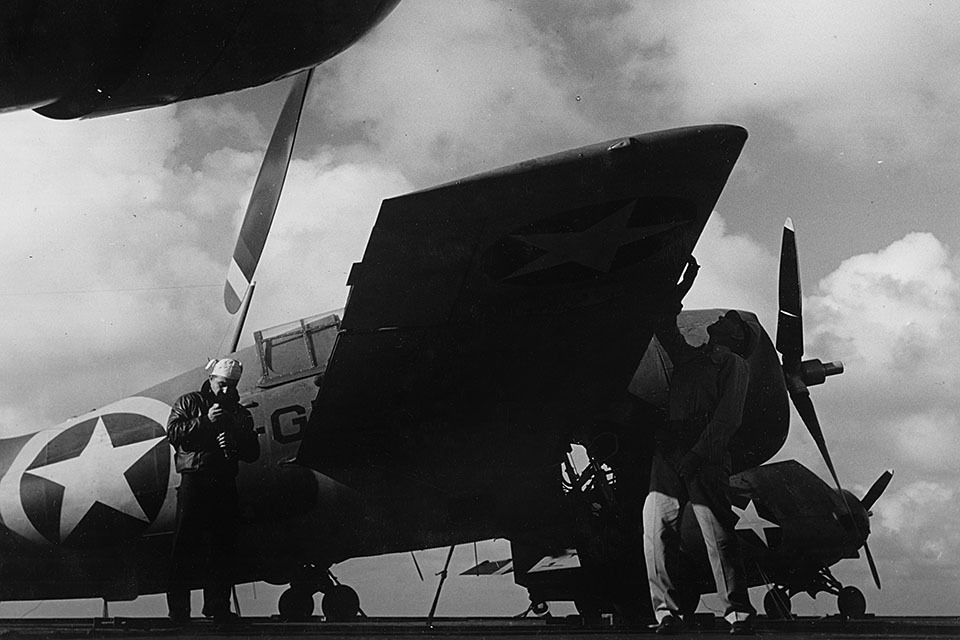
Out of the corner of my eye I saw August going up in a steep chandelle and getting his Hawk with a beautiful shot. I got my man in the sights, lost him, got him again, gave him a burst and then another. He went up into a climbing turn, a darn silly thing to do, and I only had to pull up my nose and take a simple shot at him. He staggered and rolled over, then righted himself. A streak of orange flame came from his starboard side, and he went down spinning and burning.
Eventually the Hawks ganged up on Shields, sending bullets into his fuel lines and more that tore open the top of his wing. His cockpit filled with smoke. “The fumes were getting thick now, but the machine was still flying,” he remembered. “Then an incendiary bullet started a fire. A great lick of flame came up at my face and I knew it was the end. I pushed back on the hood and tried to turn the Wildcat on her back, but she wouldn’t have it. The trim tabs and aileron surfaces were not working. I decided to stall her, and at that moment when she lost flying speed I braced my knees and jumped for it. The parachute opened, and as I floated down feeling angry and frustrated, a French plane came at me. I thought he was going to shoot me but he just flew past, wagging his wings, waving his hands and laughing like hell.”
Chuck August was also battling for his life against the Lafayette Escadrille Hawks. After his F4F took anti-aircraft hits that caused the right landing gear to droop, the Vichy fighters were chasing him over Cazes airfield when more Wildcats came to his rescue. Somehow he managed to shake off his tormentors and get his sights on a Hawk. He recounted what happened next:
My position was just right and I made a high beam attack and gave him a long burst. The .50-caliber bullets hitting at about 60 per second seemed to rip him open like a can opener. He stopped in his line of flight, turned turtle and went down in flames.
I saw another pair of enemy planes, a P-36 and a Dewoitine 520. The pilots seemed to be talking to each other. I got close in and fired. The P-36 shuddered. The weight of metal you put into them with the 50-calibers seems to jar them off their line of flight. I got to within 50 yards, feeling strangely elated. I was sure of hitting him now and as I gave him a burst with all guns and pulled up over him, he was hanging in the air and rolling about with a convulsive movement, rather like an animal in pain. Then the red-and-yellow-nosed plane turned over in a slow roll with its engine running and began to fly on its back. It was like watching a beginner crash in a training flight. It went down quite slowly and a plume of dark smoke spurted from the ground where it hit.
Still at low altitude, with friends and foes dodging in and out of view, August could see fires burning all over Cazes. He continued:
I climbed for better altitude and checked over the targets on the airfield. I made one run over some parked bombers. One of them subsided gently to the ground as if a giant had suddenly sat on it. A gun crew fired at me, and a man with a Tommy gun took a pot shot at me then shook his fist pathetically. Then suddenly, as I pulled the nose up, I found that I was losing speed. I cussed and stuck the nose down and checked the instruments. I had about 60 gallons of fuel but oil pressure was zero. Underneath was what looked like the world’s worst terrain for a forced landing—hills, rocks and gullies. I was at about 1,100 feet when my motor let out a noise that was like a cracked bell sounding over a radio at full blast. Then came a terrible vibration, the entire machine getting the jitters. It was so violent that it almost shook the stick out of my hand. Then it stopped.
August tried but failed to turn his Wildcat over before bailing out. As a result, one of his legs hit the stabilizer when he went over the side. His chute opened just before he hit the ground, though he recalled: “Hit is hardly the term. I crashed very hard and painfully because I was swinging like a pendulum. When I caught my breath I found myself on my back being dragged along by the parachute.”
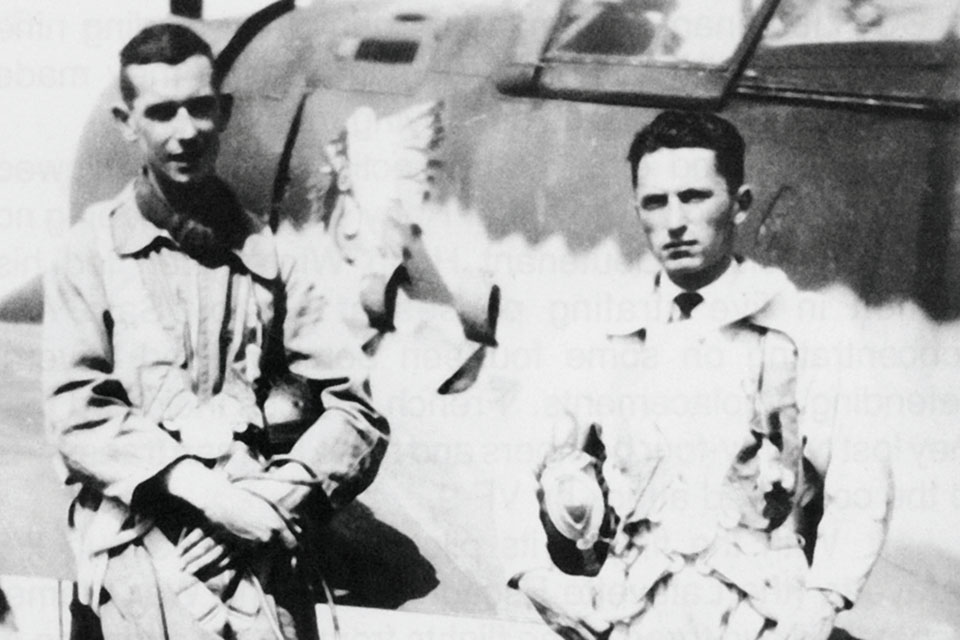
The French had taken off in ones and twos, often under fire, until they outnumbered the attackers. Lieutenant G.H. Carter expressed grudging respect for the enemy airmen:
I got separated from the gang and three Vichy pilots came from nowhere on my tail. I did everything I knew to get them off, but they kept on coming. I got a shot at one and turned him away with smoke coming from his engine. Then another one got me at close range and hit my plane behind somewhere, and the controls became difficult. The best thing seemed to be to head back out to sea and try to make the carrier, but that Frenchman on my tail was smart and exceedingly aggressive. His second burst shot away my oil cooler lines. I began to lose altitude and was heading for the drink when a bunch of bullets hit the back of my armor plate. I couldn’t do anything so I stuck her nose down and prepared to ditch. The French pilot who had just shot me down showed up on my right waving and grinning. He was still overhead when I made a crash landing. Quite a chivalrous guy.
The GC II/5 journal described the air battle with the Wildcats in melancholy terms:
The Grummans are very tenacious, provided with invincible weapons, they are three times as numerous as us and soon gain superiority over our unfortunate Curtiss planes. Our pilots, in spite of their lack of training and decrepitude of their planes, fight a fierce battle and clearly defend their lives, downing numerous enemies. [Major Georges] Tricaud is killed after having downed a Grumman above the runway. Captain [Robert] Huvet, one of our most brilliant pilots, with six confirmed victories [over Germans], is killed at his post. Adjutants [François] LaChaux and [Paul] deMontgolfier and Sergeant [Lucien] Heme, all superior pilots, also fall on the Field of Honor. Several other pilots are defeated and wounded, some seriously: Captain [Elie] Reyné received a bullet in the right thigh; Lieutenant [Georges] Ruchoux, after overcoming one enemy plane is wounded in one leg, burned and parachutes; Lieutenant Fabre is seriously wounded by three bullets in his left arm; Lieutenant Villacèque, heavily engaged against several enemy planes, defeats one of them, after which he is wounded in the face by plexiglass splinters and landed roughly. While these battles are going on, other Martlet [export version of the Wildcat] formations are machine gunning the field, burning one after the other, nearly all of the Douglas twin-engine craft [11 out of 13] of GB [Groupe de Bombardement] I/32.
VF-41 claimed 13 aerial victories and one probable, plus six planes destroyed and eight damaged on the ground. In reality, six pilots from GC II/5 were shot down and died, two were wounded, one was forced to bail out, another was killed in a takeoff accident and several aircraft returned so badly damaged as to be inoperable.
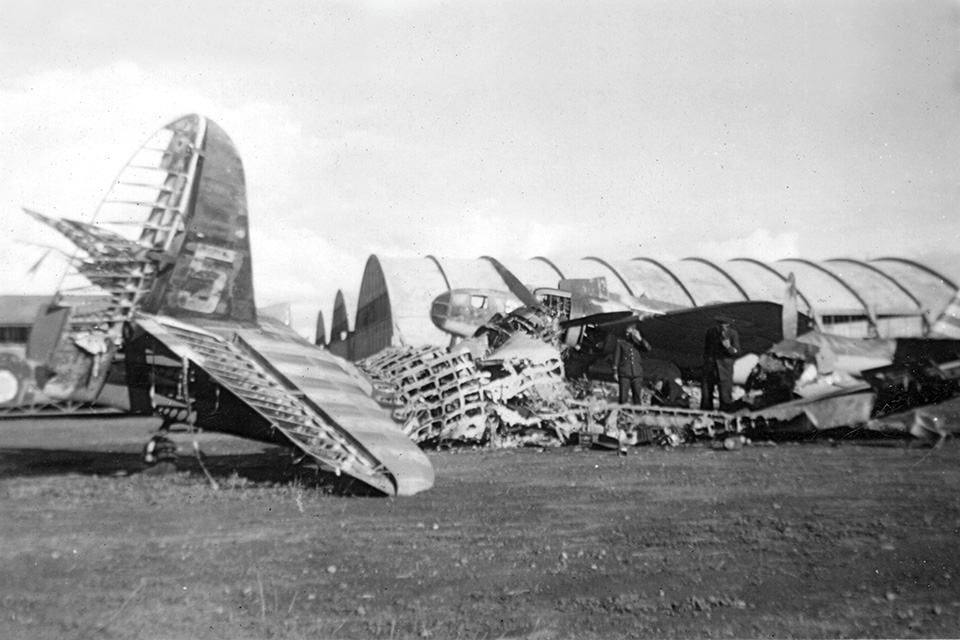
VF-41’s losses were also heavy. French pilots claimed the destruction of seven Wildcats and three more probables. In fact, six F4Fs and their pilots failed to return to Ranger. Two of the missing pilots (Shields and August) became POWs.
It had been a battle of near equals. Both the Wildcats and the Hawks had a top speed of just over 300 mph; both were highly maneuverable and armed with six machine guns (though the French guns were 7.5mm, closer to .30-caliber as compared to the Wildcat’s .50-calibers).
The dogfights had ended by the time a second patrol of 16 Wildcats (half from VF-9 and half from VF-41) led by Lieutenant Mac Wordell arrived over the beachhead. At the same time, five French destroyers came boiling out of Casablanca Harbor, headed toward the transports and landing craft. Wordell alerted his comrades, then led the unit in a strafing run. “I started firing at about 4,000 feet as my sights began to travel down the center line of the last ship in column,” he later reported. “I could see the tracers squirting on the decks and bouncing off, and it almost felt like I was running into my own ricochets. Actually I was seeing the red pencils of their tracer fire coming up at me.”
The Wildcats’ attack and a volley of shells from the offshore fleet stopped the foray by the French destroyers, but not before Wordell’s F4F was damaged by anti-aircraft fire. He recalled: “It wasn’t until I was over the leading ship that I almost subconsciously heard a noise—the same kind of noise you hear when you jam a screwdriver into a can of milk.”With oil streaming from his engine and the cockpit filling with smoke, he crash-landed. By noon the French destroyers were damaged or beached, and Wordell was riding into Casablanca behind a native Spahi cavalryman.
Jean Bart and other French ships in Casablanca Harbor were pounded by SBD dive bombers from Ranger and Suwanee and shelled by the battleship Massachusetts. Meanwhile, Task Force 34 aircraft strafed columns of French troops bound for the beachhead and also struck remote Vichy airfields.
U.S. Navy air units suffered several more casualties due to flak or mechanical failure. Santee, which bore the brunt of the trouble, lost three aircraft in landing crashes. Then Lt. Cmdr. John Blackburn was forced to ditch after he experienced landing gear problems (he was rescued the following day). Lieutenant j.g. George Trumpeter declared an emergency over land, and was never seen again. Four other pilots from Santee couldn’t locate the fleet due to radio interference and landed at Safi airfield, where they were temporarily imprisoned by the French.
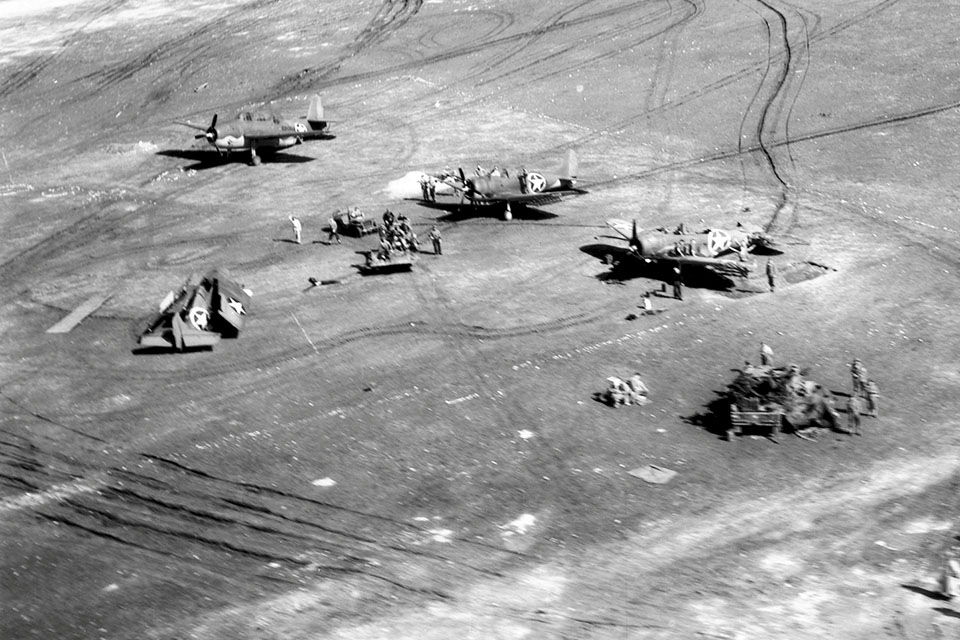
Dawn of November 9 found Patton’s army firmly established in Morocco. Despite heavy losses on the 8th, the French army and air force units again mounted a defense against the invaders. The Lafayette Escadrille pilots were airborne early on the 9th, although they had just five operational Hawk 75s.
Ranger dispatched nine VF-41 Wildcats for low-level assignments; eight VF-9 aircraft stayed close behind them, serving as top cover. Controllers on Ranger reported that Allied troops in the Fedhala lodgment were being strafed when a greater menace appeared: fresh enemy troops and tanks from Casablanca. While Lt. Cmdr. Tom Booth led VF-41 in repeated strafing runs against the French column, Fighting Nine—patrolling at 10,000 feet—spotted 15 French bombers approaching the landing craft at the beach head. They were escorted by 16 Hawks from GC I/5, the “Champagne” squadron. Lieutenant Commander Raby led eight F4Fs against this new threat.
The French bombers managed to escape while the escorting fighters engaged the Wildcats. After one Hawk dodged an overeager attack by Ensign Marvin Franger, the Navy pilot made a tight turn and stayed with him. “I was able to slide in on his tail and that was the end,” Franger said. “He started smoking and I saw fire as he went down. I didn’t see him go in but our section leader, Al Martin, saw the crash.”
The French fought courageously, but their Hawks’ 7.5mm guns were unable to inflict significant damage on the armor plated F4Fs. The Wildcats’ .50-calibers, on the other hand, took a devastating toll on the Vichy fighters, destroying four planes of the Champagne squadron and killing two of its pilots. Two other French fliers survived crash landings, while four more Hawks were dam aged. Adjutant Georges Tesseraud was gravely wounded, and Lieutenant Camille Plubeau made a belly landing at Rabat, emerging unhurt. VF-9 lost two of its aircraft to battle damage. The only GC I/5 success, by Ser geant Jérémy Bressieux, compelled Ensign C.W. Gerhardt to ditch his F4F at sea, while Ensign Louis Menard crashed into the barrier when he landed on Ranger. Neither American was injured.
By noon Fighting Nine was airborne again, scouting for enemy planes. Leading 13 Wild cats at 10,000 feet, Raby spotted many aircraft on the ground at Mediouna airfield. Diving by sections in echelon formation, the F4Fs swept down on the targets, concentrating on rows of fighters and half a dozen DB-7 bombers. After five strafing passes, all the bombers and most of the fighters were burning. During one low strafing run a Douglas bomber exploded just as Lieutenant Ed Micka passed over it—sending his Wildcat crashing into the ground. A French officer later described the aftermath in a letter: “We buried him on the spot with full military honors. Over the grave we put a white cross, to which we affixed the identification tag of the brave flier.”
Micka was not the only casualty. French gunners scored hits on several F4Fs, including Lt. j.g. Mayo A. Hadden’s, which was hit 12 times. Despite heavy damage to his plane and a shrapnel wound in one leg, Hadden managed to get his Wildcat back to Ranger.
For the balance of the day the French air force was nowhere to be seen. Task Force 34 pilots spent the rest of their time scouring the roads ahead of advancing U.S. forces.
In fact, the French defenders’ air strength had been so depleted in the first two days that no fighters appeared in the sky on November 10. Task Force 34 fighters and bombers devoted the 10th to close ground support missions and attacks on Jean Bart, which continued to lob shells at targets miles away.
Later that day, General Auguste Lahoulle, the French air commander in Morocco, met with survivors of GC II/5 to give them a pep talk. A heated discussion ensued, with senior officers of the Lafayette Escadrille imploring the general to “understand the futility of this fratricidal struggle.” It must have been a relief to all concerned when, at 8 p.m., they received a message from Casablanca ordering them to end the hostilities.
Honor having been served, the Vichy French negotiated a truce and quickly transitioned to become the Free French. Reequipped with American aircraft, the air units fought valiantly against Axis forces for the balance of the war.
Many of the U.S. Navy fliers who fought in Morocco went on to serve in the Pacific. Fighting Nine, for example, would see two tours of combat against the Japanese. And several former Task Force 34 pilots—including Blackburn, Wordell, Franger and Menard—became aces before the war’s end.
John W. “Jack” Lambert is the author of numerous books and articles about air combat during World War II. For additional reading, he recommends his own Wildcats Over Casablanca monograph.
Originally published in the May 2011 issue of Aviation History. To subscribe, click here.

